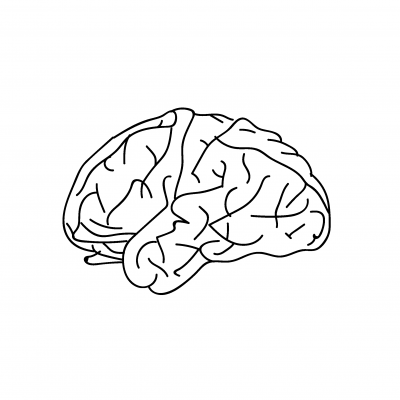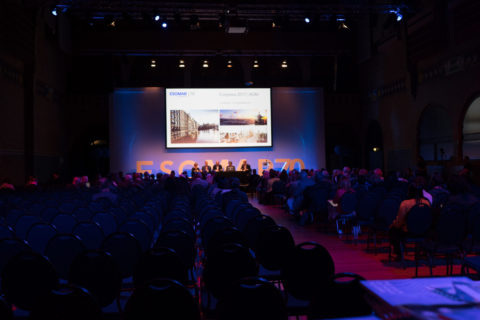By Crawford Hollingworth and Liz Barker
Welcome to our Bias in the Spotlight series! Behavioural science is increasingly being applied everywhere we look. To help Research World Connect readers keep up to speed with this thinking, over the next 18 months, The Behavioural Architects will be introducing the key concepts and cognitive biases relevant to this area in a new series of articles called ‘Bias in the Spotlight’.

In recent years, psychologists have proposed a theory of dual systems of the mind: System 1 and System 2. Of course, the brain is not literally divided like this, but it is a useful analogy:
- Our System 1 thinking is automatic, quick, intuitive, emotional and reactive
- Our System 2 thinking is conscious, effortful, logical, and deliberate
System 1 and System 2 have evolved in us for quite distinct reasons. Therefore, they function very differently. To illustrate these concepts, consider the following three problems and be honest:
Problem 1: A bat and a ball cost $1.10 in total. The bat costs $1 more than the ball. How much does the ball cost?
Problem 2: If it takes 5 machines 5 minutes to make 5 widgets, how long would it take 100 machines to make 100 widgets?
Problem 3: In a lake, there is a patch of lily pads. Every day, the patch doubles in size. If it takes 48 days for the patch to cover the entire lake, how long would it take for the patch to cover half the lake?
(Answers at the end)
System 1 jumps up to answer these problems. However, System 2 needs to be activated to really think through the right answer.
Most formal messaging and communication is typically directed toward our analytical, rational System 2. This neglects the more frequent driver of decision-making, System 1. This is driven by emotion and snap judgement, especially if we are time-pressed, hungry or tired. Most of the time, most people function using their System 1 as it requires little effort. Advertisements that generate positive feelings, such as those which feature a cute animal or a trusted or sexy celebrity, rather than appealing to reason, play to System 1.
In reality System 1 and 2 work in tandem: System 1 feeds relevant input into our System 2. As Dan Kahan, a Professor of Law and Psychology at Yale says:
“There is nothing that makes it onto the screen of ‘conscious’ thought that wasn’t (moments earlier!) unconsciously yanked out of the stream of unconscious mental phenomena.”
Whilst each have distinct styles, one cannot operate without the other and are highly integrated. They are mutually supportive, rather than discrete and hierarchical. Indeed, System 2 has limited resources. It picks and chooses what is most sensible to invest its energy in. It can sometimes be lazy – especially if something is not viewed as a very important decision – leaving System 1 to pick up the slack.
Some people also believe that the very purpose of emotions is to help us make sense of our deliberative reasoning. David Hume once said:
“Reason is and ought only to be the slave of passions”
He recognised that the head (System 2) needs the heart (System 1) even more than the heart needs the head, since reason rarely provides us with any clear motivation and drive. Without emotion or feeling, reason is merely a cold, mechanical method of calculation. It can help us work out what the consequences of our actions might be, but it cannot tell us whether they are desirable.

*Answers: 5 cents, 5 minutes, 47 days.
Even though the three questions above may have showed up common System 1 errors, the truth is both ‘Systems’ can be biased and make mistakes! Some people mistakenly assume that System 1 is the source of all bias and errors. Yet, errors and inaccuracies can be caused by either system. For example, your System 1 may have gathered accurate information, yet your System 2 may process this poorly and make a mistake. Conversely, System 1 may have gathered biased information, yet although your System 2 processes it accurately, you will still arrive at an incorrect conclusion due to the biased nature of the initial information.
Or both could make an error! For example, confirmation bias is a good example of this. Within this we may notice and more easily remember information that supports our existing belief (a System 1 activity), while also being motivated to analyse any new information in a way that supports our existing belief (a System 2 activity).
In summary:
“To make a deliberative judgement based on a mere unreliable feeling is a different mistake from experiencing a reliable feeling and arriving at an incorrect conclusion through an error in deliberative judgement.” (Gram Stone)
Every three weeks The Behavioural Architects will put another cognitive bias or behavioural science concept under the spotlight. The next concept under the spotlight will be Heuristics.
By Crawford Hollingworth and Liz Barker, The Behavioural Architects
About the authors:
Crawford Hollingworth is co-Founder of The Behavioural Architects – an award-winning global insight, research and consultancy business with behavioural science at its core, which he launched in 2011 with co-Founders Sian Davies and Sarah Davies.
Liz Barker is Global Head of BE Intelligence & Networks at The Behavioural Architects.


